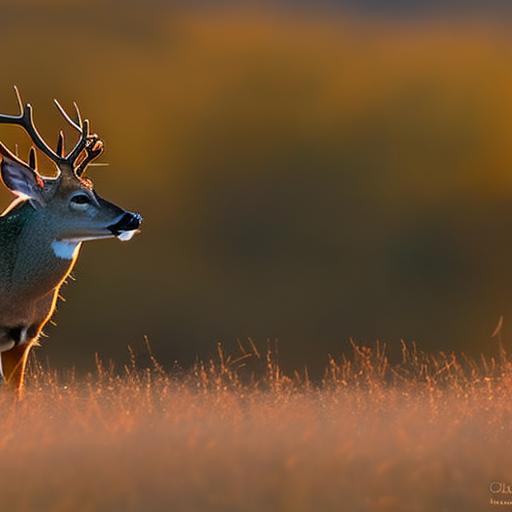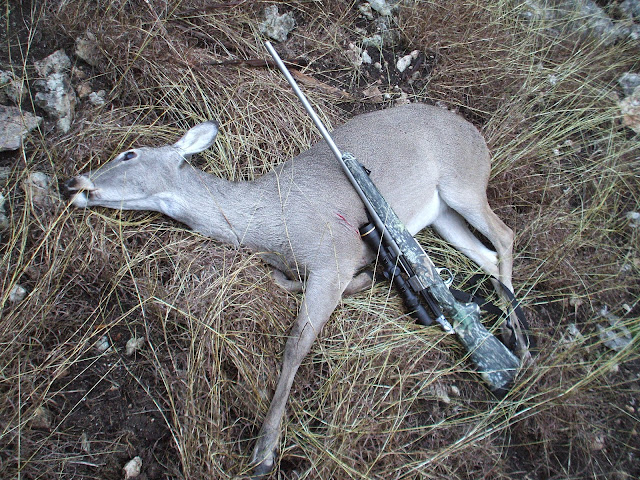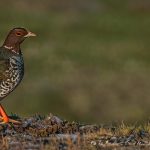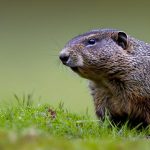Your cart is currently empty!

Hunting Success Starts Early: What Time Are Deer Most Active in the Morning?

Table of Contents
Introduction
Hey there, fellow hunter! You know, there’s an age-old adage in the hunting community: “The early bird gets the worm.” Or in our case, perhaps it’s “the early hunter gets the deer.” It’s something I’ve learned throughout my years, especially when transitioning from upland game to chasing those elusive white-tailed deer. Timing, I’ve found, isn’t just crucial—it’s often the difference between a day to remember and a day of “what could’ve been.” One of the most frequent questions I get from budding hunters and even some seasoned ones is, “What time are deer most active in the morning?” It’s a question that’s crucial, not just out of curiosity but for refining our hunting tactics. And trust me, when you get the timing just right, it’s like the forest gifts you a moment of magic. So, why are those early morning hours so darn essential, and how can we, as hunters, make the most of them? Let’s dive in.
Understanding Deer Behavior and Dawn Activity
Ah, deer. Majestic creatures, aren’t they? Having spent a great deal of my life hunting small game, the transition to hunting deer was both a challenge and a revelation. What stood out the most was how different deer behavior was from the animals I was accustomed to pursuing. Let’s break it down.
The Intricacies of Deer’s Circadian Rhythm
Now, for those unfamiliar with the term, the circadian rhythm is basically an internal clock. It’s what tells you to feel sleepy when it’s nighttime and awake during the day. Deer, interestingly, have their own version of this, and boy, does it make a difference in how and when we hunt them.
Unlike us humans who are generally diurnal (active during the day), deer tend to be crepuscular. This fancy term means they’re most active during the twilight hours of dawn and dusk. Ever wondered why those early morning treks into the woods often result in some deer sightings? It’s that circadian rhythm at play! Their bodies are naturally wired to feed and move about as the sun starts to rise and again as it sets.
Seasonal Shifts and Their Impact on Deer Activity
As if understanding their daily patterns wasn’t intricate enough, toss in the changing seasons. Deer aren’t just static creatures who stick to a fixed routine year-round. No, they adapt, and they do so brilliantly.
In the spring, food is abundant, and the weather is mild. Deer are less pressured, and their activity might be more spread out throughout the day. But as we transition to fall, particularly with the rut (mating season) in the air, those morning hours become even more crucial. Bucks are on the move, searching for does, and establishing territory. Hence, as hunters, we need to be adaptable too. It’s all about reading the signs and understanding that as the seasons shift, so do deer and their behavior.
Dawn: The Golden Hour of Opportunity
Now, here’s where all this knowledge really starts to come together. Dawn is not just another part of the day; it’s a unique window of opportunity for us hunters. Why, you ask? Several reasons.
Firstly, the quietude of dawn means the woods are relatively undisturbed. While many creatures are just starting their day, deer are already active, providing the hunter an advantage of stillness and the element of surprise.
Secondly, the cool temperatures of the morning mean deer are more likely to be on the move, feeding, and socializing, before the warmth of the midday sun makes them seek shelter and rest.

Lastly, for many hunters, including myself, there’s something incredibly serene about the dawn. It’s as if nature is granting us a brief moment where time stands still, and all you have in your sights is that deer, oblivious to the world waking up around it.
Expert Tips for Leveraging Morning Activity
Diving into the world of deer hunting after spending years chasing smaller game is a bit like switching from playing chess to 3D chess. The principles might be familiar, but there’s a whole new dimension to consider. With the knowledge that deer are especially active during the morning hours, let’s delve into how we can best capitalize on this time. Here are some expert tips I’ve gathered over the years, tailored for those precious dawn moments.
Know Your Ground: The Art of Scouting
Just as you wouldn’t enter a new city without a map, venturing into the woods without familiarizing yourself with the terrain is a rookie mistake. Scouting is your reconnaissance mission. It allows you to locate feeding areas, deer trails, bedding spots, and water sources. By understanding these key areas, you can position yourself strategically to intercept deer during their morning activity. Remember, it’s not just about finding the deer, but anticipating where they’ll be.
The Sound of Silence: Approaching Without Alerting
Moving quietly is a skill, and during the dawn hours, it’s a superpower. The woods are quieter, and sounds travel further in the still morning air. Here are some techniques:
- Soft-Soled Boots: These dampen the sound of your footsteps.
- Step Heel-to-Toe: It distributes weight gradually, making for a quieter step.
- Move Slowly: It might sound obvious, but take your time. Rushing increases noise and the chance you’ll be spotted.
Morning Camouflage and Scent Techniques
Now, while our goal is to see deer, we surely don’t want them to see or smell us. The morning light casts different shadows and offers unique challenges:
- Use the Shadows: Dawn’s low light means longer shadows. Position yourself within them.
- Opt for Lighter Camo: As the sun hasn’t fully risen, a slightly lighter shade of camo can blend better with the surroundings.
- Scent Control: Morning dew can intensify scent. Using scent eliminators or blockers is crucial. Also, consider storing hunting clothes in airtight bags with leaves, twigs, and other forest items to give them a natural scent.
Gear Up for Dawn: Essential Equipment
There’s something refreshing about the morning chill, but it requires some special gear considerations:
- Layer Up: Morning temperatures can be cool, but as the sun rises, it might get warmer. Wear layers so you can adjust accordingly.
- Binoculars with Good Low Light Vision: The ability to spot deer from a distance in low light can be the difference between success and a missed opportunity.
- LED Headlamp: While you don’t want to be moving with it on, a headlamp helps in setting up or navigating your way to your spot in the dark.
Transitioning from small game hunting to targeting deer during their most active hours in the morning is a challenge, but with these tips, you’ll be well on your way to mastering the morning hunt. Remember, hunting, like any skill, is honed over time, so be patient, keep learning, and enjoy the serenity of dawn in the woods.
Recognizing Signs of Deer Morning Activity
After countless mornings spent in the thickets, waiting on rabbits and pheasants, turning my gaze towards deer hunting was like learning a new language. But like any language, the key is in recognizing patterns. Let’s embark on this journey to recognize the whispers and footprints deer leave behind in the early hours of dawn.
Feeding Areas: The Morning Buffet
Deer, just like us, have breakfast. And while they don’t have bacon and eggs on toast, their morning menu does involve a lot of greens. Early morning is prime feeding time.
- Look for Foraged Plants: Deer adore tender shoots, leaves, and fresh grasses. Signs of freshly nibbled vegetation can indicate deer have been active in the area.
- Natural Food Plots: Open areas in the woods or forest clearings can be natural feeding spots. Not only do they offer a buffet of fresh greens, but they also allow deer to keep an eye out for predators.
Understanding and recognizing these feeding areas can help position you in the perfect spot to watch deer as they have their morning munch.
On the Trail: Identifying Fresh Tracks and More
Ah, tracking. It’s an art and a science, and the morning offers some unique clues:
- Fresh Tracks: Morning tracks look crisp and sharp. If you find a track in soft soil, press your finger next to it. If your mark looks similar in sharpness and depth, chances are the deer track is fresh.
- Scat: Yes, we’re going there. Deer droppings can tell a story. Fresh ones are dark and shiny due to moisture. As they age, they dry out and turn lighter.
- Bedding Areas: These are spots where deer have rested, and they often look like flattened patches of grass or leaves. If there’s dew around the area but the bed itself is dry, a deer likely rested there not too long ago.

Nature’s Helping Hand: Moisture, Dew, and Morning’s Gifts
The morning woods feel different, right? There’s a dampness, a certain chill. These environmental factors aren’t just atmospheric; they’re practical tracking tools.
- Dew Trails: As deer move through grassy areas, they disturb the dew. Trails of knocked-off dew or wet marks can give away a deer’s recent path.
- Moisture Highlighted Prints: Wet ground can make deer prints more visible, especially on leaves or muddy paths. The moisture can accentuate the print, making it easier to spot.
- Breath and Fog: On cold mornings, a deer’s breath can be visible as they exhale, creating small clouds of fog. If you’re stealthy and observant, this can be a dead giveaway of a deer’s location.
Learning to spot these signs and interpret them correctly is vital. While my roots in small game hunting taught me patience and observation, hunting deer in the morning taught me the nuances of nature’s language.
Related Questions
Why do deer patterns change with the seasons?
From my time chasing smaller game, I quickly learned that Mother Nature sets the rhythm for all its critters, deer included. As the seasons change, so do the food availability, daylight hours, and mating behaviors for deer. In spring, food’s plentiful, and deer might graze more leisurely. Come fall, especially during the rut (mating season), you’ll find bucks more restless and active, seeking out does. Winter has them conserving energy and seeking warmer spots. It’s all about adaptation, really.
Is dawn the only prime time to hunt deer?
Ah, the early bird gets the worm, as they say. But while dawn is a prime time for deer activity, it’s not the only time. Deer are crepuscular, which means they’re most active during the twilight hours of both dawn and dusk. That evening timeframe can be just as rewarding for a hunter, especially as the sun sets and deer venture out for a bite before nighttime. But for me, there’s something special about the stillness of dawn.
How do different terrains affect morning deer activity?
Just as I had to adjust my strategies for quails in the meadow versus squirrels in the forest, deer behavior varies across terrains. In wooded areas, deer enjoy the cover of trees, making them a bit more confident in their morning wanderings. On the flip side, in open plains or fields, they might be more cautious, sticking closer to the edges or waiting for a bit more light. Knowing your terrain is key; it dictates where deer might feel safe, feed, and travel during those early hours
Summary
Reflecting on our hunting journey today, understanding when those majestic deer move around can genuinely turn your hunt from a game of chance to a calculated dance between predator and prey. Many a time, when I’m out in the brush, reminiscing about my upland game days, I appreciate the transition. The serenity of the morning, combined with the game’s unpredictability, is an experience in itself. So, what time are deer most active in the morning? As we’ve explored, it’s during those delicate moments of dawn when nature is just waking up, and deer are making their morning moves. And while there’s no one-size-fits-all answer—thanks to various factors like terrain, season, and weather—arming yourself with this knowledge sets you up for success. Always remember, every hunt is a learning experience, and every morning in the woods is an opportunity. Keep honing those skills, embrace the early hours, and here’s to many successful hunts ahead! Cheers!

Herb has been a longtime lover of the outdoors. Whether it be hunting, camping, fishing or just getting outside to reset. Proud father and animal lover. Bourbon anyone?

by
Comments

Categories
- Big Game Hunting (301)
- Deer (202)
- Reviews (3)
- Shooting (16)
- Slingshot (1)
- Small Game Hunting (42)
- Upland Hunting (126)
- Waterfowl Hunting (3)





Leave a Reply